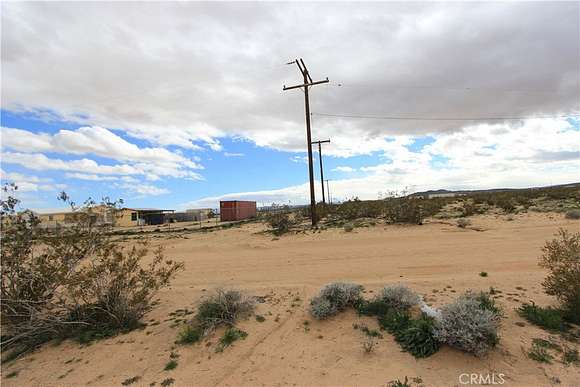Flea markets are often seen as vibrant, eclectic spaces filled with hidden gems and diverse offerings. But beyond the simple act of buying and selling, these markets have a significant economic and cultural impact that extends far beyond their physical boundaries. They offer much more than just affordable goods and local crafts; they serve as vital meeting points for small businesses, artists, and entrepreneurs, offering them opportunities to test the market, build customer relationships, and promote sustainable practices.
Economic Contributions of Flea Markets
Flea markets provide an affordable entry point https://www.cosy-home.fr/ for small businesses, artisans, and local entrepreneurs who may not have the resources to open a permanent store or boutique. These markets offer a cost-effective way to sell products, test new ideas, and gauge customer interest before making large financial commitments.
For instance, many independent vendors and local creators begin their journey in the world of retail at flea markets, where they can interact directly with customers, receive feedback, and build a loyal following. The lower overhead costs of running a stall, compared to leasing retail space in commercial areas, allow these entrepreneurs to sustain and grow their businesses.
Additionally, flea markets are often the birthplace of small, independent brands. Many artisanal food vendors, jewelry makers, vintage clothing sellers, and woodworkers started out at a local flea market, eventually expanding into larger markets or even launching their own online stores. These local entrepreneurs often become key players in their community’s economic fabric by supporting local supply chains, contributing to job creation, and generating tax revenue for the region.
Flea markets also provide an essential outlet for the resale economy. By selling second-hand goods—ranging from clothes and toys to electronics and furniture—flea markets support sustainability and the circular economy, ensuring that products have a second life rather than being discarded. The practice of upcycling, or repurposing old items, is also common in these markets. For instance, people might find refurbished furniture or repurposed materials turned into art pieces. This reduces waste and promotes a more eco-conscious lifestyle.
Flea Markets as Cultural and Social Hubs
Beyond their economic value, flea markets also play a crucial role in preserving and showcasing the local culture and history of a region. Many flea markets reflect the diverse backgrounds, traditions, and tastes of the area’s population. In this way, they become living museums of local culture, offering a direct connection to the past.
For example, flea markets often feature regional food specialties, from freshly made tacos in Mexico to traditional cured meats in Italy. These food stalls provide an important opportunity to explore the culinary heritage of a place, offering flavors and techniques that might be passed down through generations. Visitors can also find traditional crafts, such as handwoven textiles, pottery, or jewelry that have been created using centuries-old methods.
Artistic expression is another hallmark of flea markets. Many markets feature independent artists who create pieces inspired by the community’s culture or local history. Whether it’s a painting that reflects the neighborhood’s architecture or a handmade scarf made from local fibers, flea markets give local artists an opportunity to share their work with a broader audience and provide visitors with a tangible connection to the culture.
Flea markets are also a great place to discover local music and performances. Many markets feature live bands, street musicians, or dance performances, which add to the festive atmosphere and provide a platform for emerging talent. These performances help create a sense of belonging and allow visitors to experience the local culture in an authentic, hands-on way.
The role of flea markets as community gathering spots can’t be overstated. These markets often host cultural festivals, artisan fairs, and seasonal events that bring together people from all walks of life. This aspect of flea markets is especially evident in larger, well-established markets that become annual traditions for locals and tourists alike. For example, events like holiday markets, craft fairs, and flea market festivals offer opportunities for social interaction, entertainment, and local pride.
The Role of Flea Markets in Urban Regeneration
In many cities around the world, flea markets play a central role in urban regeneration and the revitalization of neighborhoods. The emergence of flea markets in previously underdeveloped or neglected areas can breathe new life into communities, attract visitors, and even inspire other forms of investment.
One example of this phenomenon is Borough Market in London, which has evolved from a small, historical market into a world-renowned food hub. By revitalizing the area, Borough Market helped attract new businesses, revitalize the local economy, and make the surrounding neighborhoods more desirable. Similarly, the Queen Victoria Market in Melbourne, Australia, serves as an anchor for its community, providing a dynamic space for commerce and culture while driving investment in the surrounding area.
Flea markets can also promote local tourism. Visitors to major flea markets often spend time exploring surrounding neighborhoods, dining at local restaurants, and shopping at nearby boutiques. This economic ripple effect benefits the broader community by increasing foot traffic, supporting other small businesses, and encouraging investment in infrastructure.
The Digital Transition: Online Flea Markets and Marketplaces
As the world moves increasingly online, flea markets have also started embracing e-commerce. In recent years, several online platforms and virtual flea markets have emerged, making it possible for vendors to reach a global audience. Platforms like eBay, Etsy, and Depop have transformed traditional flea market models, allowing sellers to offer their wares to people all over the world. While the digital experience can never quite replicate the unique atmosphere of an in-person market, online flea markets have made it easier for buyers to discover rare or vintage items from all corners of the globe.
At the same time, traditional flea markets have integrated digital tools to improve their operations. Some markets now feature online directories, virtual tours, and payment systems, making it easier for customers to navigate and shop. For example, some flea markets now provide a mobile app that helps visitors locate specific vendors, check market hours, and even make contactless payments. This combination of in-person shopping with digital convenience allows flea markets to stay relevant in an increasingly digital world.
Combining Tradition and Innovation in Flea Markets
Flea markets have a unique ability to combine traditional practices with innovative ideas, creating a space that is both timeless and evolving. While many people continue to visit flea markets for the thrill of the hunt—looking for antiques, collectibles, and vintage treasures—others are drawn to the market’s innovative and modern aspects, such as technology-driven shopping experiences or contemporary pop-up stores from emerging brands.
In some cities, flea markets have even embraced themed markets. For example, markets may feature designated spaces for up-and-coming artists, food truck festivals, or even sustainability-focused vendors who sell eco-friendly products. This blending of tradition and innovation is helping flea markets evolve and stay relevant in the face of changing consumer expectations.
The Global Appeal of Flea Markets
What makes flea markets so special is their universal appeal. No matter where you go in the world, you’ll find flea markets offering authentic experiences, local goods, and memorable encounters. Whether it’s a bustling market in Bangkok or a quaint one in a small French village, flea markets provide visitors with the opportunity to connect with the heart of a community. They offer an authentic slice of local life that big-box stores and shopping malls simply can’t replicate.
For tourists, flea markets offer a chance to take home unique, handcrafted souvenirs or items that reflect the essence of the place they’ve visited. For locals, flea markets provide an affordable alternative to shopping in traditional retail spaces, with the added bonus of supporting small businesses and artisans. Whether you’re looking for something specific or simply enjoying the sensory experience, a visit to a flea market is often an adventure that ends with an unexpected find, a new connection, and a deeper appreciation for the community around you.
Conclusion: Flea Markets as Cultural Pillars and Modern Conveniences
Flea markets are more than just places to shop—they are cultural institutions that serve as gathering spaces for communities to interact, exchange ideas, and share their history. They have evolved to offer a mix of modern innovations while still holding on to their traditional roots. Whether in a small town or a bustling metropolis, flea markets continue to provide something for everyone, from vintage lovers and bargain hunters to foodies and local artisans. They are dynamic, evolving places that reflect the ever-changing tastes and cultures of the places they inhabit while staying true to their core values of community, sustainability, and discovery.…

